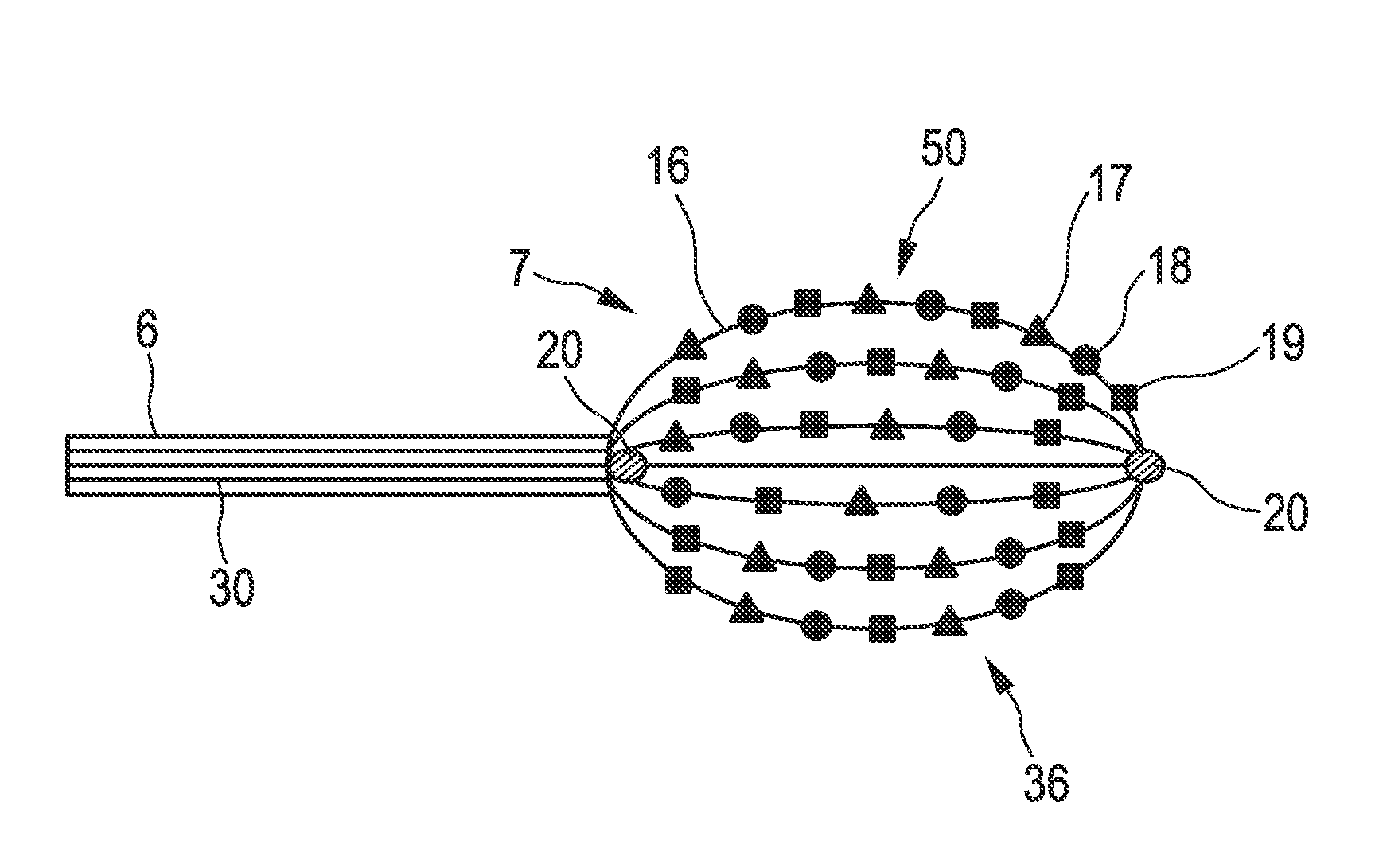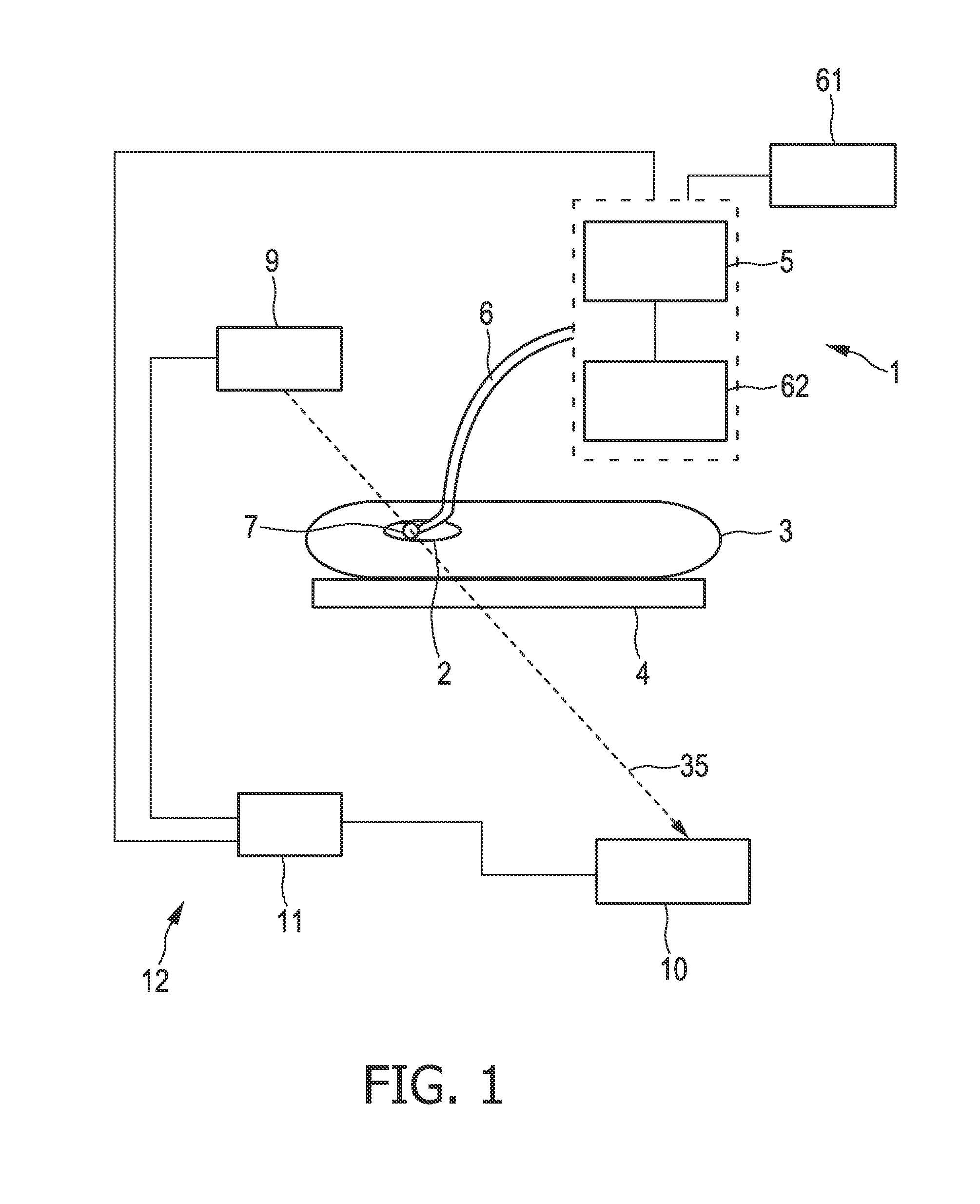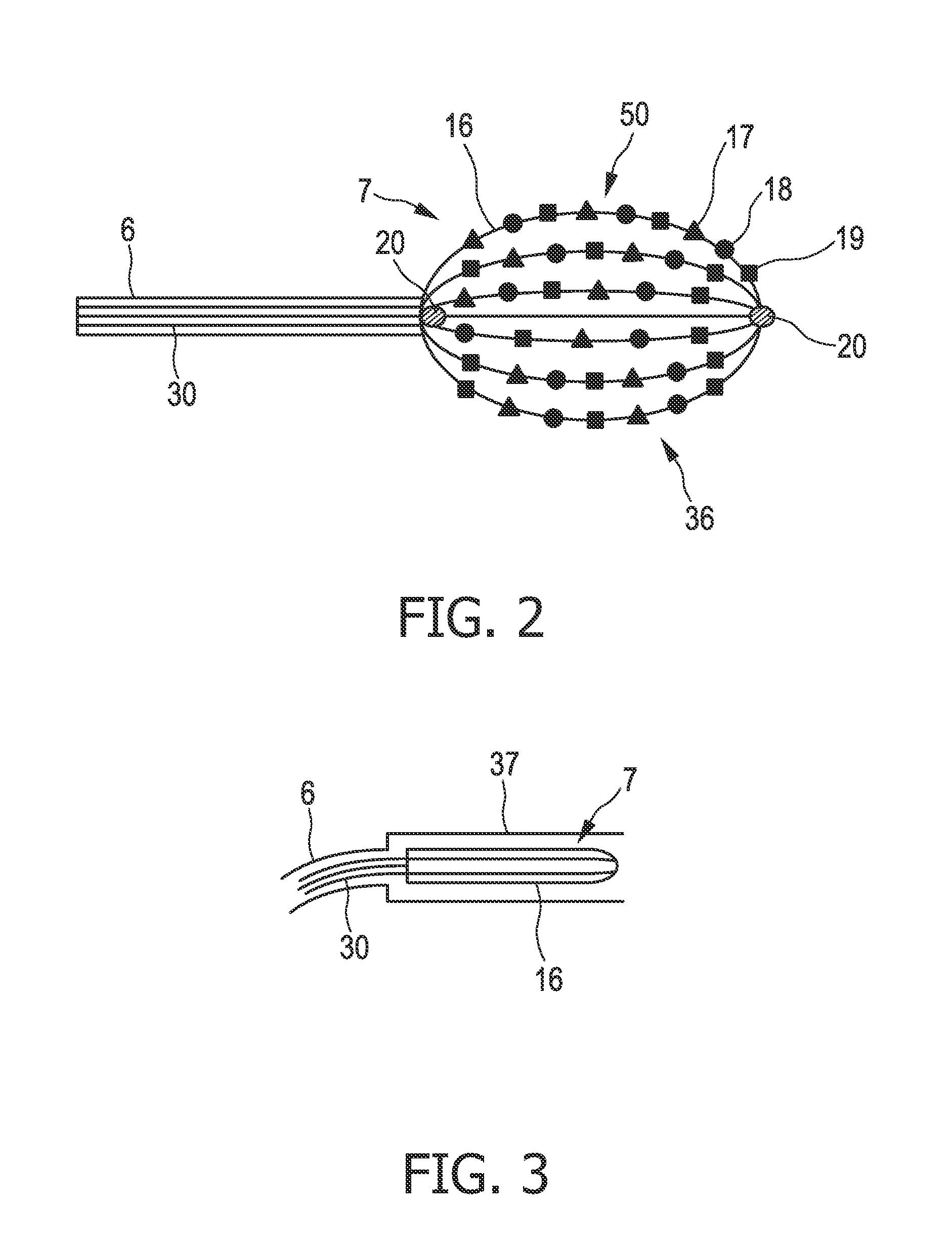Sensing apparatus for sensing an object
- Summary
- Abstract
- Description
- Claims
- Application Information
AI Technical Summary
Benefits of technology
Problems solved by technology
Method used
Image
Examples
Embodiment Construction
[0048]FIG. 1 shows an apparatus 1 for sensing an object. The apparatus 1 comprises a tube, in this embodiment a catheter 6, and an arrangement 7 of sensing elements for sensing a property of the object. At least some sensing elements of the arrangement 7 are operable in a contact mode, in which a sensing is performable, while the sensing elements are in contact with the object, and in a non-contact mode, in which a sensing is performable, while the sensing elements are not in contact with the object, i.e. the same sensing elements can be operated in the contact mode and in the non-contact mode.
[0049]The arrangement 7 of sensing elements is connected to a control unit 5 via the catheter 6. The catheter 6 with the arrangement 7 of sensing elements can be introduced into an object 2, which is, in this embodiment, a heart of a patient 3 located on a patient table 4, wherein the catheter 6 is steered and navigated to the heart chambers by a steering unit 62 using built-in guiding means (...
PUM
 Login to View More
Login to View More Abstract
Description
Claims
Application Information
 Login to View More
Login to View More - R&D
- Intellectual Property
- Life Sciences
- Materials
- Tech Scout
- Unparalleled Data Quality
- Higher Quality Content
- 60% Fewer Hallucinations
Browse by: Latest US Patents, China's latest patents, Technical Efficacy Thesaurus, Application Domain, Technology Topic, Popular Technical Reports.
© 2025 PatSnap. All rights reserved.Legal|Privacy policy|Modern Slavery Act Transparency Statement|Sitemap|About US| Contact US: help@patsnap.com



